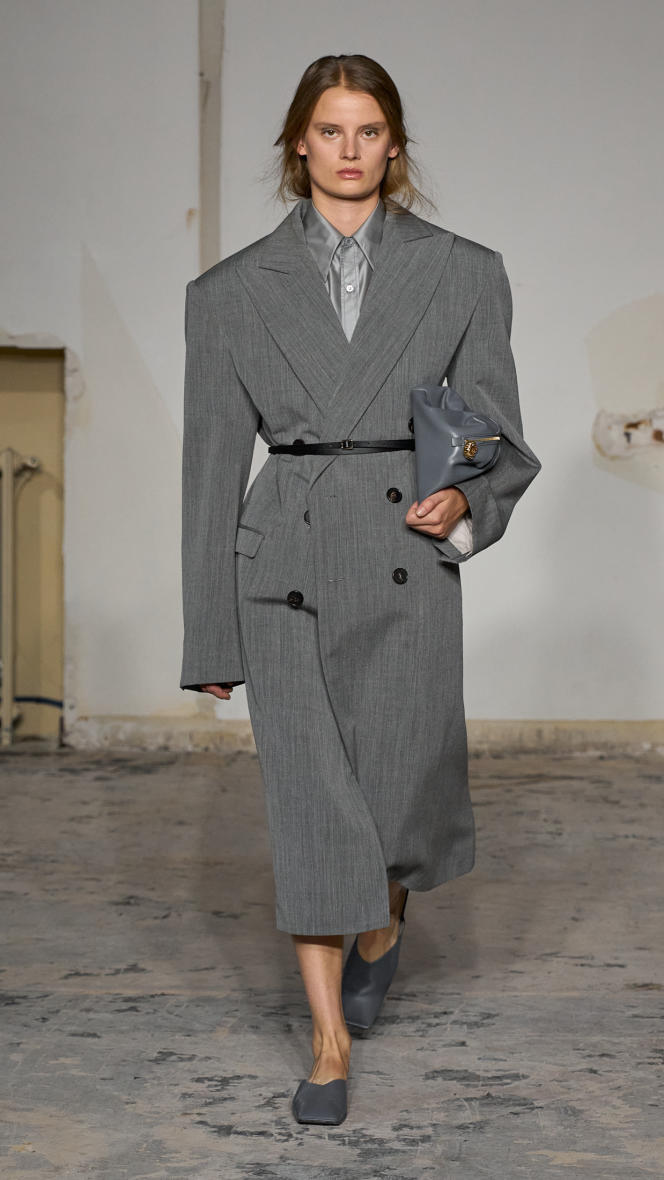What could be better than a dilapidated building, where everything needs to be renovated, to signify that a new beginning is offered to you? On Saturday September 30, it was in a derelict office building on Avenue Marceau in Paris that British designer Louise Trotter began her reconstruction of Carven, a minimalist label but still with a prestigious name. At least that’s what ICCF wants to believe.
Already the owner of Icicle, the Chinese group bought Carven in 2018, after it was placed under safeguard procedure, then appointed Trotter as artistic director. “I have my hands free”assures the one who arrived in March and to whom Gap, Joseph and Lacoste have called on in the past in order to offer their aging heritage a sophisticated interpretation. “I have the entire identity of the house to think about: the store, the logo, the clothes…”
Founded on May 24, 1945 with the opening of a boutique at 6 of the Champs-Elysées roundabout, Carven is a diversion of the first name of its founder, Carmen de Tommaso, named by her opera enthusiast father after the Bizet’s heroine. She, seeing there the name of a “bad girl”, preferred to change one letter. Carven first had a good time in haute couture. But the 1970s marked the beginning of the roller coaster fueled by successive takeovers by various groups: Rostschild, Worth Fine Fragrances, SCM, Béranger… For the small world of fashion, the last excitement for Carven dates back to the beginning of the 2010s when the designer Guillaume Henry knew how to restore shine to his ready-to-wear. Will Trotter in turn be able to find an adequate formula?
Wide-shouldered blazers and sensual skirts
“The house has kept few archivesrecalls Louise Trotter. Ms. Carven bequeathed most of them to the Palais Galliera or the Louvre. She had the intelligence to share it with others. » From the Carven vocabulary, she therefore reinterpreted the green and white striped pattern on a shirt or leather bags, that of “Ma griffe”, a cotton dress from spring-summer 1949 that Carmen de Tommaso revered, or took up the mania to mark the size. This results in double-breasted coats or sand or metal gray shirt dresses held in place by thin belts. Wide-shouldered wool blazers and sultry satin skirts, spaghetti-strap dresses and slipper-friendly mules, baby blue or lemon-yellow bags to carry in your hand, big, fluffy white t-shirts like a duvet, and costume jewelry that fits collide…
The subject, pure and controlled, of a refinement both without false notes and without a touch of madness, is embodied in places by familiar models who were, in the 2010s, the face of minimalist fashion and eager to reconcile bourgeois wardrobe and feminist emancipation, such as Maggie Maurer or Saskia de Brauw. “Where I draw a parallel with Ms. Carven is in this idea of a woman who designs clothes with the aim of giving confidence to other women”says Louise Trotter who would like the claw to manage to exhale ” a state of mind “, that of an emancipated heroine (this first collection manages to suggest this) and joyful (this remains to be developed). Firm and focused, the designer refuses to let herself be weighed down by a narrative that is too defined or an aesthetic that is too definitive. ” The past is the pastshe sweeps away. What I’m looking for now is a woman capable of moving forward. »
